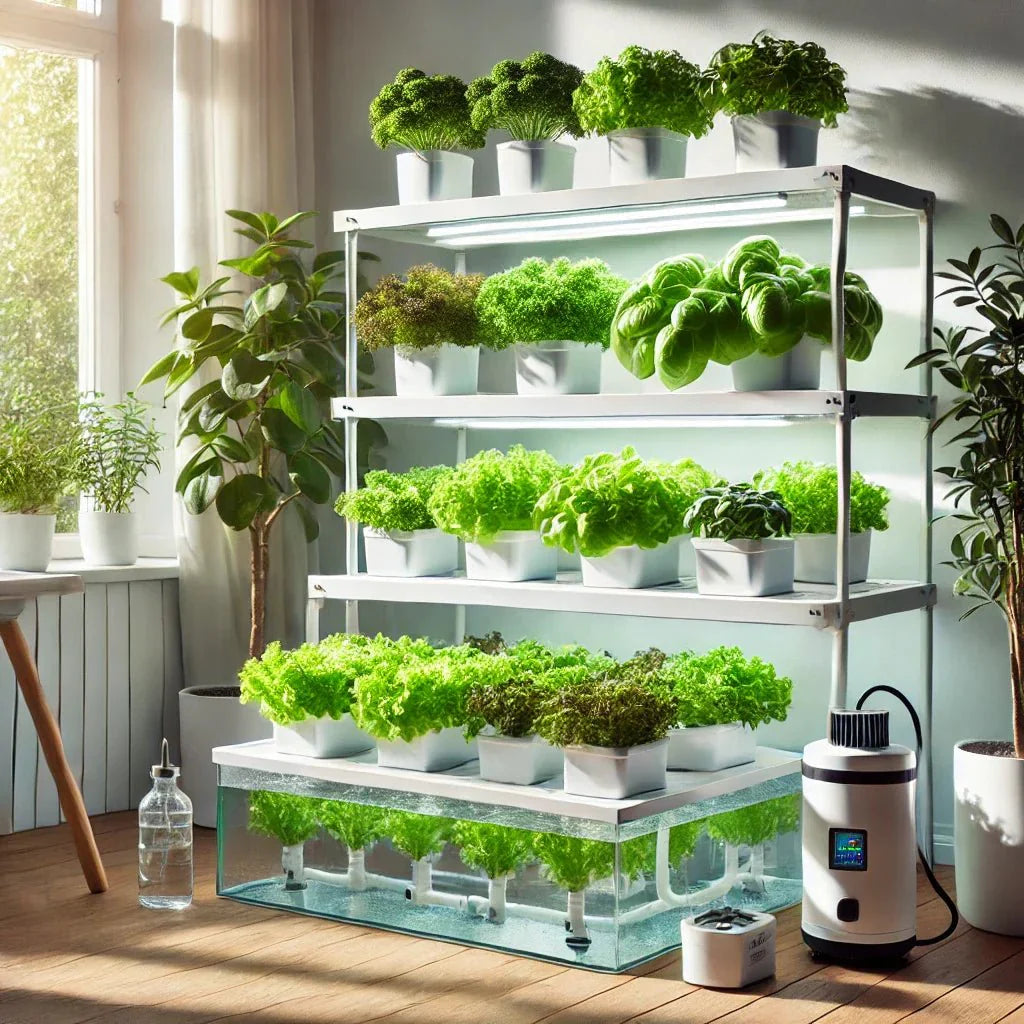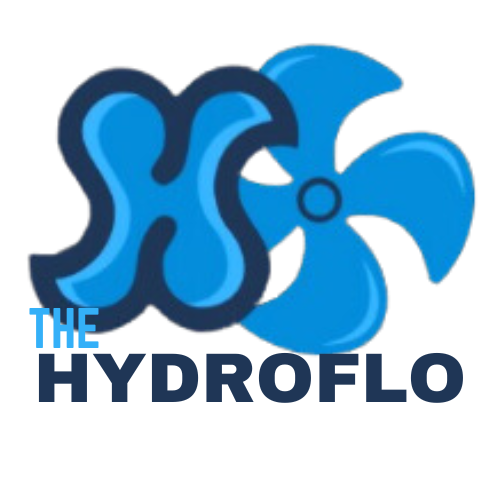
Setting Up Your First Hydroponic System: A Step-by-Step Guide
Hydroponics is revolutionizing the way we grow plants by eliminating the need for soil and using nutrient-rich water instead. Whether you’re a gardening enthusiast with limited space, a DIY tinkerer eager to try something new, or someone interested in sustainable food production, setting up your own hydroponic system is both an exciting and rewarding challenge. In this guide, we’ll walk you through the fundamentals of hydroponics, help you choose a system that fits your needs, list the materials you’ll require, and provide detailed, step-by-step instructions for building and maintaining your hydroponic garden. With reliable data links and practical advice, this article is designed to empower you to start growing your own fresh produce at home.
1. Understanding Hydroponics
Before diving into building your system, it’s essential to understand what hydroponics is and why it’s gaining popularity worldwide.
What Is Hydroponics?
Hydroponics is a method of growing plants without soil. Instead, plants receive water enriched with nutrients, which allows them to absorb everything they need directly through their roots. This technique can lead to faster growth rates and higher yields compared to traditional soil-based gardening. For an in-depth look at the science behind hydroponics, check out NC State Extension’s guide on hydroponic vegetable production.
Why Choose Hydroponics?
- Water Efficiency: Hydroponic systems use up to 90% less water than traditional gardening, as water is recirculated and reused throughout the system. Studies like those summarized in this research article on water usage detail these efficiency gains.
- Faster Growth and Higher Yields: With precise control over nutrients and environmental conditions, plants can grow faster and more uniformly.
- Space Saving: Hydroponics is ideal for urban environments or areas with poor soil quality since it can be set up indoors or in small spaces.
- Reduced Pests and Diseases: The controlled environment minimizes exposure to soil-borne pests and pathogens, reducing the need for chemical pesticides.
Types of Hydroponic Systems
There are several types of hydroponic systems available, each with its unique benefits:
- Nutrient Film Technique (NFT): A thin film of nutrient solution flows over the roots.
- Deep Water Culture (DWC): Plants are suspended in nutrient-rich oxygenated water.
- Ebb and Flow (Flood and Drain): The system periodically floods and drains the root zone.
- Aeroponics: Plant roots are misted with a nutrient solution.
For a comparative analysis of these systems, Maximum Yield’s overview of hydroponic systems is a great resource to explore.
2. Planning Your Hydroponic System
A successful hydroponic garden starts with careful planning. Consider your space, budget, and the types of plants you want to grow when choosing the right system.
Assessing Your Space and Environment
- Indoor vs. Outdoor: Indoor systems offer greater control over environmental factors like temperature and light, while outdoor systems might be more cost-effective if you have adequate space.
- Lighting: If you’re setting up indoors, assess your lighting needs. Natural sunlight is ideal, but supplemental LED grow lights can be used to extend your growing season. For guidance on optimal lighting setups, Epic Gardening’s lighting guide offers practical advice.
- Temperature and Humidity: Ensure the space you choose maintains a relatively stable temperature and humidity level, as fluctuations can stress plants.
Deciding on a Hydroponic System Type
Selecting the right system depends on your specific needs:
- Nutrient Film Technique (NFT): Best for small leafy greens and herbs.
- Deep Water Culture (DWC): Ideal for larger plants like tomatoes and peppers.
- Ebb and Flow: A versatile system that works well with a variety of crops.
- Aeroponics: Suitable for those interested in cutting-edge technology and willing to invest in a system with higher maintenance requirements.
Consider your long-term goals. For instance, if you plan to expand your system later, modular designs might be preferable. Hydroponics.net offers a wealth of articles and user experiences to help you decide.
Budget Considerations
Plan your budget by accounting for:
- Initial Setup Costs: Containers, nutrient solutions, pumps, timers, lights, and growing media.
- Ongoing Costs: Electricity for pumps and lights, replacement nutrients, and any water treatment chemicals.
- DIY vs. Ready-Made Kits: DIY systems offer customization and often cost less, while kits can simplify the process but may be pricier.
By mapping out your plan and budget, you can avoid unexpected costs and choose a system that matches your DIY capabilities.
3. Gathering Materials and Equipment
Now that you have a plan in place, it’s time to gather the necessary materials and equipment for your hydroponic system.
Essential Components
- Growing Containers: These can be anything from repurposed storage bins to specialized hydroponic trays. The container should be opaque to prevent algae growth.
- Reservoir: A tank to hold the nutrient solution. The size will depend on your system’s scale.
- Pump and Timer: A submersible pump is needed for circulating the nutrient solution. A timer helps automate the flooding and draining cycles, especially for systems like ebb and flow.
- Nutrient Solution: Purchase a high-quality, water-soluble nutrient mix designed specifically for hydroponics. This article on nutrient formulations offers insights into what to look for.
- Growing Medium: Options include clay pellets, coconut coir, or perlite. The medium supports the plants and helps anchor their roots.
- pH and EC Meters: These tools are vital for monitoring and adjusting the pH and electrical conductivity (nutrient concentration) of your solution.
- Lighting (if indoors): LED grow lights are energy-efficient and can be tailored to the growth stages of your plants.
- Plumbing Materials: Tubing, fittings, and sometimes PVC pipes for building channels or trays.
Optional Enhancements
- Air Pumps and Air Stones: Enhance oxygenation in the nutrient solution, particularly important for Deep Water Culture systems.
- Water Heaters or Chillers: Depending on your climate, you might need to regulate the temperature of the nutrient solution.
- Monitoring Systems: Some DIY enthusiasts integrate sensors and even IoT devices to remotely monitor system parameters.
Sourcing Your Materials
Many hardware stores and online retailers offer the components you need. For specialized hydroponic supplies, sites like Hydroponics.net or local hydroponics shops are excellent resources. Additionally, Epic Gardening provides detailed product reviews and recommendations for both beginners and advanced growers.
4. Building Your Hydroponic System
With your materials in hand, it’s time to build your system. This section provides a step-by-step guide to assembling a simple, yet effective, DIY hydroponic garden.
Step 1: Design Your Layout
Sketch a layout plan for your system. Consider:
- Flow of Nutrient Solution: Ensure that the water can circulate efficiently throughout the system.
- Accessibility: Plan for easy access to plants for monitoring, maintenance, and harvesting.
- Space Utilization: Arrange containers or trays to maximize the available area.
Step 2: Set Up the Reservoir and Plumbing
- Position the Reservoir: Place your reservoir at a lower level relative to your growing area, if using gravity-based systems.
- Install the Pump: Submerge your pump in the reservoir. Connect it to the tubing that will deliver the nutrient solution.
- Arrange the Tubing: Run the tubing from the pump to the upper parts of your system (e.g., NFT channels or flood trays). Secure the tubing with clamps or zip ties.
- Test the Flow: Before adding plants, run the pump for a few minutes to ensure there are no leaks and that the nutrient solution is circulating properly.
For a visual demonstration, check out this video tutorial on hydroponic system assembly.
Step 3: Prepare Your Growing Medium and Containers
- Fill Containers: Add your chosen growing medium to each container. Ensure it is evenly distributed.
- Rinse (if necessary): Some media, like clay pellets, should be rinsed before use to remove dust or debris.
Step 4: Planting
- Seed Germination: Start seeds in a small propagation tray with a moist medium. Once they develop a few leaves, transfer them to the hydroponic system.
- Plant Placement: Carefully place each seedling into the growing medium in your container. Ensure that the roots have good contact with the medium.
Step 5: Adding the Nutrient Solution
- Mix the Nutrients: Follow the manufacturer’s instructions to mix the nutrient solution in the reservoir.
- Monitor pH and EC: Use your pH and EC meters to adjust the solution to optimal levels (typically a pH between 5.5 and 6.5). This step is crucial; imbalanced nutrients can stunt growth or harm your plants.
- Circulate the Solution: Once the solution is properly balanced, restart the pump and ensure that the nutrient mix flows throughout the system.
Step 6: Fine-Tuning and Safety Checks
- Leak Inspection: Regularly inspect all tubing and connections to ensure there are no leaks.
- Timer Setup: If you’re using an ebb and flow system, set the timer to control the flooding cycle. For instance, a common cycle might be 15 minutes on, 45 minutes off.
- Lighting Adjustment: Ensure your plants are receiving adequate light. Adjust the height and duration of your LED lights based on plant growth stages.
Building your system step by step minimizes errors and allows you to make adjustments along the way. Remember, every hydroponic setup can be customized—feel free to experiment and optimize the design for your specific environment.
5. Maintenance and Troubleshooting
Once your system is up and running, regular maintenance and monitoring are key to long-term success. Here are practical tips for keeping your hydroponic garden in optimal condition.
Daily and Weekly Maintenance
- Check Water Levels: Ensure the reservoir remains filled. Water evaporates and plants uptake nutrients, so topping off is essential.
- Monitor pH and EC: Regularly test the nutrient solution’s pH and electrical conductivity. Adjust as needed to keep your plants healthy.
- Inspect for Leaks: Examine tubing, connections, and the reservoir for any signs of leakage or malfunction.
- Clean Surfaces: Wipe down surfaces to prevent algae growth and bacteria buildup.
Seasonal and Periodic Tasks
- Deep Clean the System: Every few months, drain the system and clean all components thoroughly. This prevents salt buildup and disease.
- Replace Nutrients: Over time, nutrients can become imbalanced or depleted. Regularly replace or refresh your nutrient solution.
- Inspect Equipment: Check pumps, timers, and lights for wear and tear. Replace parts as needed to avoid sudden system failures.
Troubleshooting Common Issues
- Algae Growth: Algae can develop if light penetrates the reservoir. Use opaque containers and cover any transparent parts.
- Clogged Tubing or Filters: Regularly flush your tubing and clean any filters to ensure uninterrupted water flow.
- Nutrient Deficiencies: Yellowing leaves or stunted growth can be signs of nutrient imbalances. Use a reliable nutrient mix and monitor your solution’s concentration.
- pH Imbalances: Sudden pH changes may indicate contamination or system issues. Keep pH adjustment solutions on hand and check the readings daily.
For additional technical details and troubleshooting techniques, Hydroponic Maintenance Guidelines provide a deeper dive into maintaining a healthy system.
Conclusion
Embarking on your first hydroponic system is an exciting journey into sustainable, efficient, and innovative gardening. From understanding the science behind hydroponics to carefully planning, building, and maintaining your setup, each step empowers you with knowledge and practical skills. Not only does hydroponics offer the potential for higher yields and faster growth, but it also represents a way to produce fresh, healthy food in almost any environment.
As with any DIY project, the key to success is patience and a willingness to learn through experimentation. Expect a few challenges along the way—from fine-tuning your nutrient solution to troubleshooting minor system hiccups—but every setback is a learning opportunity. Remember to leverage the wealth of online resources, communities, and expert guides available; for instance, revisiting Epic Gardening or NC State Extension can provide ongoing insights and tips.
By taking control of your growing environment, you’re not only cultivating plants—you’re cultivating a deeper connection with nature and a step toward a more sustainable lifestyle. So gather your materials, plan carefully, and enjoy the journey of setting up your very own hydroponic garden. Happy growing!
Data Sources & Further Reading:
